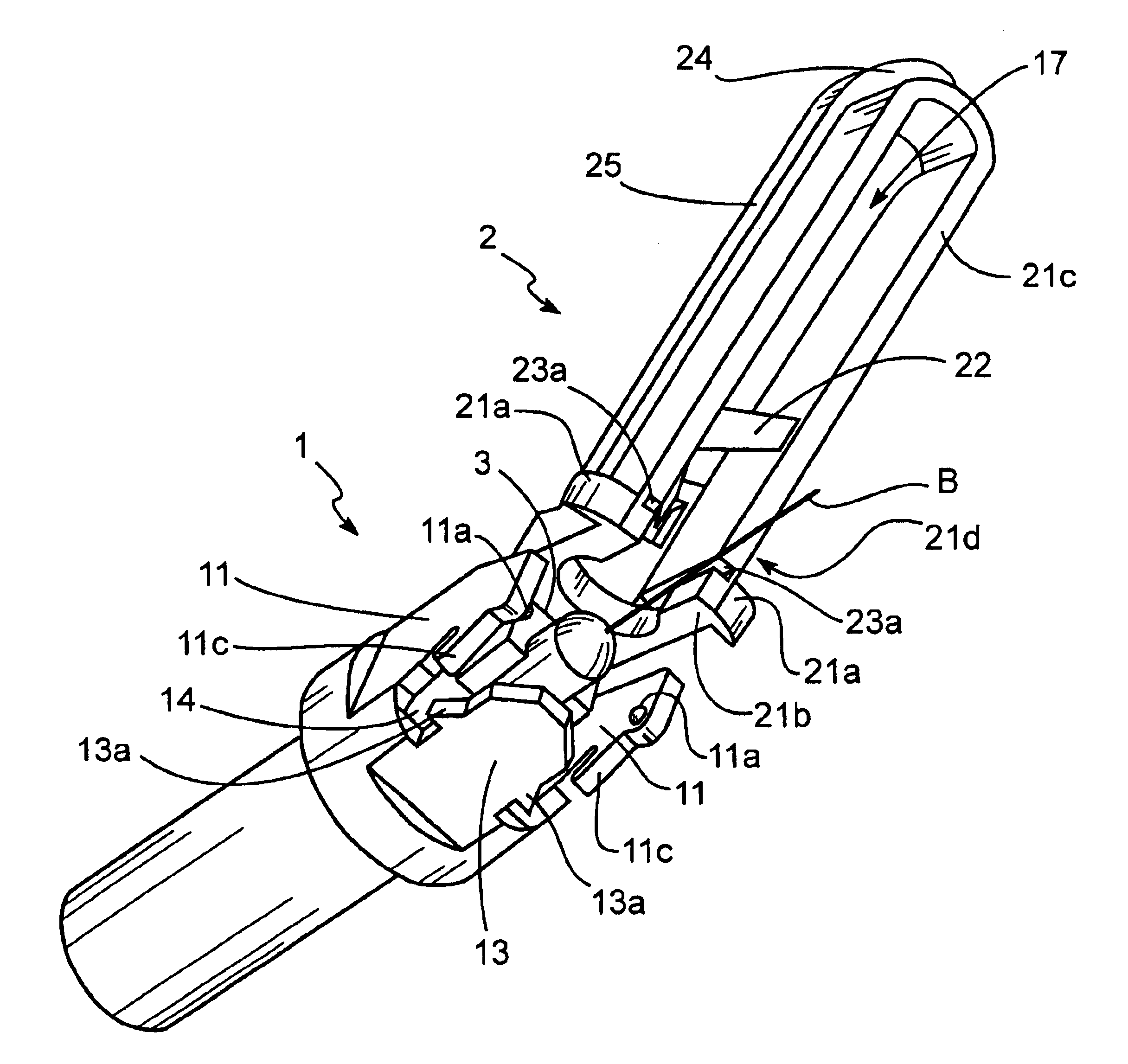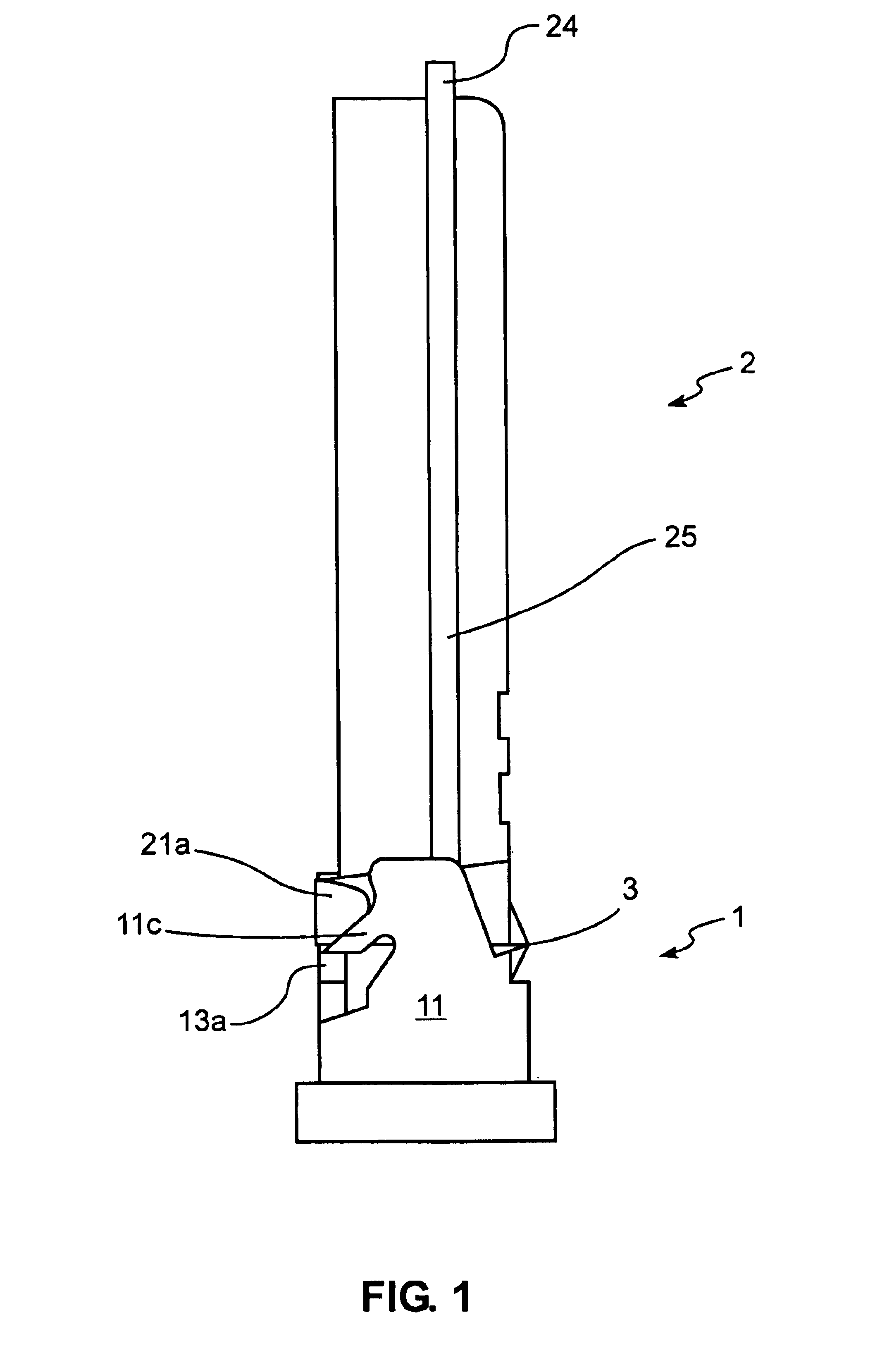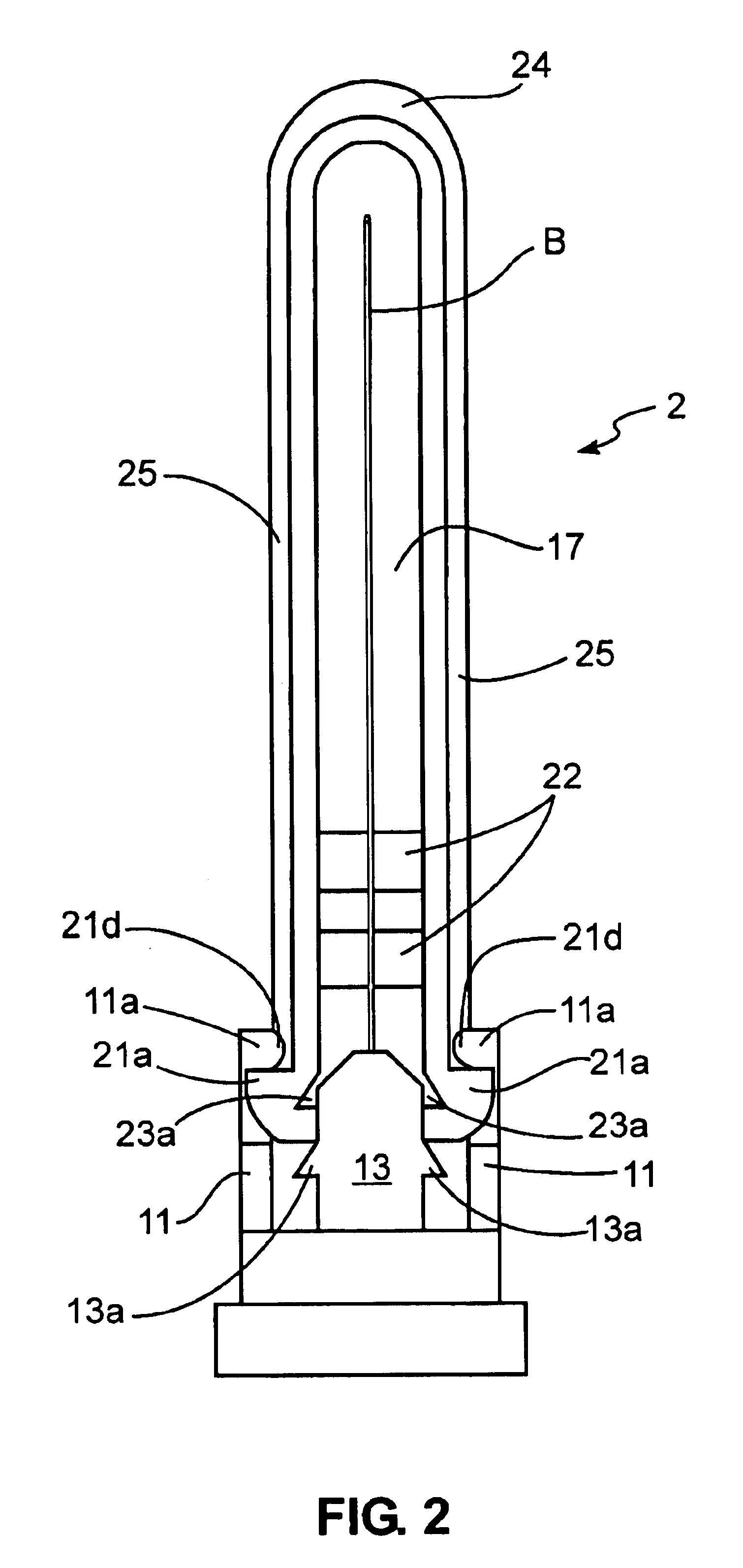Syringe needle cover
a protection cover and needle technology, applied in the field of syringe needle protection covers, can solve the problems of unprotected needles, accidental puncture of protection covers, and bystanders, such as medical staff, to be lost or bystanders, to be accidentally punctured, etc., and achieve the effect of less likely to be reopened
- Summary
- Abstract
- Description
- Claims
- Application Information
AI Technical Summary
Benefits of technology
Problems solved by technology
Method used
Image
Examples
Embodiment Construction
The following is a detailed description of the Protection Cover according to the invention with reference to FIGS. 1-7.
As indicated in FIG. 1 and FIG. 2, the Protection Cover includes a Needle Hub 1 and a Longitudinal Member 2. The Needle Hub 1 is used to secure the base of a syringe needle (not indicated), and the Longitudinal Member 2 is used to cover and protect a needle such as a Cannula Needle B. Typically, the Cannula Needle B is at the center of the needle base (not indicated). The Protection Cover has a Hinge 3, which integrates with the Longitudinal Member 2 at the back side of the Needle Hub 1. U-shaped Brim 21b has two Locking Protrusions 21a at the lower part of the Longitudinal Member 2 (see FIG. 4). There are Side Blocks 11 at the two sides of the Needle Hub 1 and on top of the Side Blocks 11 are Locking Protrusions 11a corresponding to and that interlock with Detents 21d on the outside of the Longitudinal Member 2. The Locking Protrusions 11a are optimized to be knob-...
PUM
 Login to View More
Login to View More Abstract
Description
Claims
Application Information
 Login to View More
Login to View More - R&D
- Intellectual Property
- Life Sciences
- Materials
- Tech Scout
- Unparalleled Data Quality
- Higher Quality Content
- 60% Fewer Hallucinations
Browse by: Latest US Patents, China's latest patents, Technical Efficacy Thesaurus, Application Domain, Technology Topic, Popular Technical Reports.
© 2025 PatSnap. All rights reserved.Legal|Privacy policy|Modern Slavery Act Transparency Statement|Sitemap|About US| Contact US: help@patsnap.com



